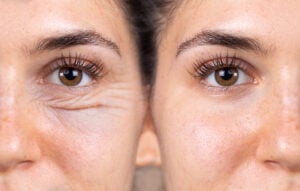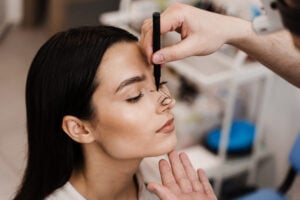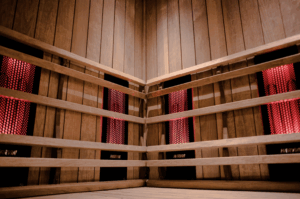Breast augmentation is the most popular form of aesthetic surgery – and has been for quite some time. There are now several methods commonly used for the surgery, which is also widely referred to as a “boob job”.
Currently, there are two main types of filler for changing the shape or size of a woman’s breasts. The two fillers – ‘foreign’ substances or medical prostheses placed inside the body – are silicone implants and saline-filled implants. These are inserted under the breast tissue or muscles of the chest during a surgical procedure that is performed under sedation.
There is also natural breast augmentation surgery, also known as fat grafting or fat transfer breast augmentation. With this, grafts from other body parts are used to ‘plump up’ or reshape existing breasts.
Breast augmentation methods explained
We’ll now go on to describe all three methods of breast augmentation, also known as a “boob job”, along with their pros and cons.
Silicone implants
The silicone in this type of implant is in both the outer shell and inner gel. Some decades ago, the filler was like a liquid, and modern silicone implants have more of a ‘gummy bear’ or ‘jelly baby’ consistency.
There have been cases of silicone implants leaking, which is something surgeons call ‘silent rupture.’ Manufacturers claim that leaked silicon will stay in the shell or the breast implant pocket. It’s difficult to tell if a silicone implant has leaked since it may not affect the look of the breast.
Women with silicone implants are encouraged to have an MRI scan three years after surgery and then every two years afterwards. The scan will be able to detect if an implant has collapsed or ruptured.
Saline implants
Saline implants consist of an elastomer silicone shell filled with a sterile saline solution, like saltwater. The breast’s firmness, shape, and ‘feel’ depends on how much saline is in the shell. The saline may be inserted at the time of the surgery, or the implants may be pre-filled.
This type of implant is less expensive than silicone, which is why many women choose it.
Saline has an important advantage over silicone implants. If the outer shell of a saline-filled implant ruptures, then the body absorbs the saltwater solution easily and harmlessly. The implant is then reduced in size.
Saline may be safer for health than silicone, but the major downside of saline water implants is that many women (and plastic surgeons) agree that they do not feel as natural as silicone.
Fat transfer breast augmentation
The minimally invasive technique, known as fat transference or grafting, involves injecting fat from other areas of the body into the breast. Natural breast augmentation surgery is an excellent method to use if, for example, you want to reduce the size of your stomach or thighs etc., as the surgeon can use the fat from these areas to plump up or reshape your breasts.
This form of natural breast augmentation surgery involves using liposuction. The most usual form is a combination of water-based and laser or radiofrequency assisted liposuction.
For the best results, the breasts should already have a good shape and tone. One downside to the fat grafting method is that it achieves a limited increase in the volume of the breasts. Also, if some of the ‘live’ cells don’t ‘take’ in the breast, cysts can form in some cases.
There is, however, a much faster recovery time, a more natural look and no need to go ‘under the knife.’ Some women have a combination of implants and natural breast augmentation surgery.
Important points for all breast augmentation methods
There are minimum age restrictions for both types of implants – 18 for saline fillers and 22 for silicone implants. Plastic surgeons explain that breasts often don’t stop growing until the women are in their early 20s.
Weight loss can cause the skin above the implants to become wrinkled (or ripple). What is more, the surgical cost of removing implants – whether they have ruptured or you don’t want them anymore – can be almost as expensive as having them inserted in the first place.
Fat transfer breast augmentation is a more natural process, using the body’s own fat, so there is no fear of contamination – or leakage, for that matter. But, because it involves both liposuction and fat grafting, natural breast augmentation surgery is more expensive than having just fillers.
Breast fillers are temporary and should be replaced every ten to twelve years. Fat grafting, on the other hand, is permanent.
Whatever type of breast augmentation method you choose, plastic surgeons recommend you carefully consider why you want it in the first place. It should be your own choice, and remember that you’ll have to budget for future costs down the line with implants.
Medical Travel Market will soon be launching agency services to connect you with world-leading international healthcare providers. Sign up to stay informed.
Discover Health Tourism Worldwide















